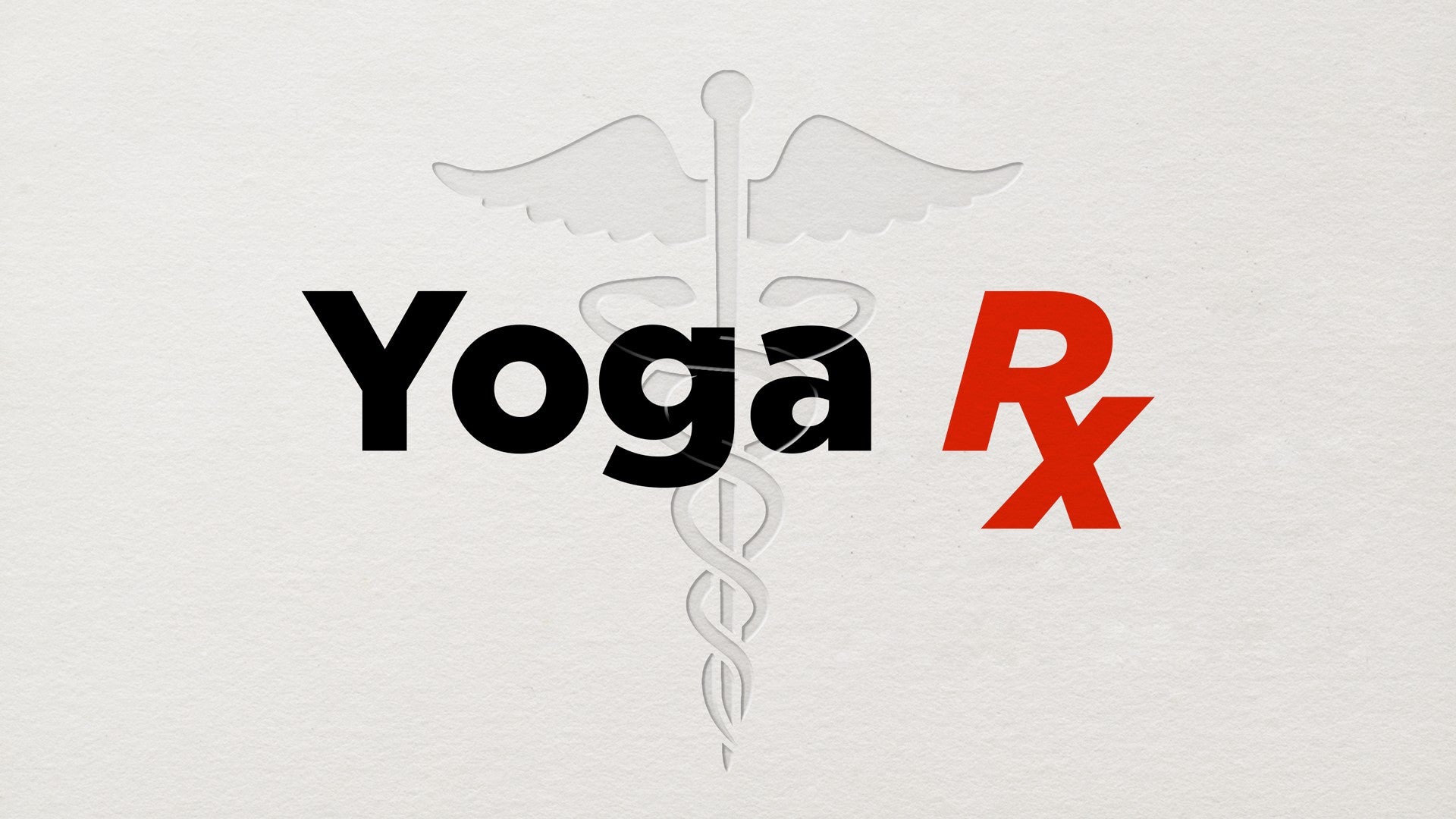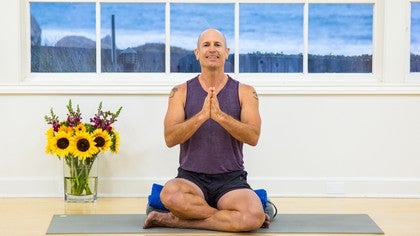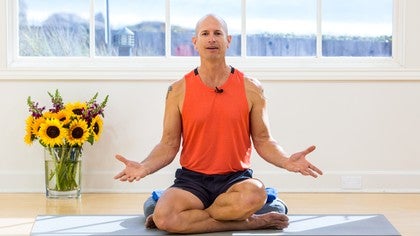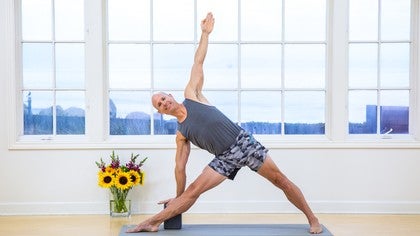Description
About This Video
Transcript
Read Full Transcript
Om. Namaste everyone. Nice to have you here. I'm going to take a minute to talk a little bit about pain and introduce this series that we're doing together. And I'd like to bring up a few concepts, a few topics. Pain is not an easy thing to talk about. It can be very challenging when we're suffering through pain. I've been through plenty through my life. And I know it can be quite difficult to deal with. But I think if we can talk about a few concepts that are supported by all the latest research, we can begin to redefine pain. We can think about it in new and empowering ways. And this is what I want to bring up in this talk is how to really see it in a different perspective so that when we do our poses, we can understand how we're starting to change our body's relationship to the experiences we feel. So I'd like to begin by talking about the common viewpoint of pain. It's very often considered that tissue damage or injury and the pain we feel, they're the same. That if I feel pain, I'm feeling my injured tissue. This sets us up for a particular way of looking at pain that is actually can be, if not slowing down our process of recovery, can actually be harmful for us. And so the first thing I want to do is help separate tissue damage and pain and explain a little bit more of an updated point of view that pain is actually a production of our nervous system and brain. And if you just heard possibly that pain is all in your head, that's not what I'm saying. And I'm not saying it's all in your mind. Pain is a real thing, but it's produced from our nervous system and our brain. It is a perception from our nervous system and brain of the neural signaling that comes from our body. So for example, if we fall down and skin our arm or even break a bone, our nerves send signals to the spinal cord and brain. The brain processes that, notices that it's threatening information and it goes, I know how to protect you. I'll create an experience that will limit your motion. We know it as pain. And of course it's very uncomfortable, but that discomfort serves a purpose. It's trying to protect us. So let's take the first step and recognize what pain is as tough as it can be. If you can see it as a protection, our system trying to protect us, we can take a first positive step to go, okay, okay, my system is trying to protect me. This starts to build a relationship with the pain, at least a positive one to know this is a supportive thing. I'm trying to be protected here. The next step we want to do is try to change the way that we're going to interact with the pain. From the common view, remember where tissue damage and pain, they're thought to be the same thing. The common view, we get one major word, fix it. Just take the pain. I don't care what it, just take it away. Drugs, surgery, whatever. If you can give me the magic technique for manual therapy, whatever it is, make it go away. And of course we do want that pain to go away, but what we're essentially saying is take my protective mechanism and get rid of it. Take my protective mechanism, toss it aside. If instead of the word fix, we change to explore. One of the cool things about this updated point of view with pain that pain is a production of, a protection built by the nervous system and brain, is that we realize if we can change the way our system is perceiving itself, we may be able to change the pain experience. What I mean is there can be two phases in a pain situation, an acute injury phase where we fall down, we hurt ourselves, something gets injured. That pain is spot on. It's trying to say, look, let's back off on the movement for a while.
Let's take it easy and let an environment be so healing can occur. And that's an important thing to understand. But our injuries have a healing time that we should expect to see. So for example, if I broke a bone, we get casted six to eight weeks. Our bone has actually healed and knitted together. Maybe there's a little bit longer time for certain situations, but for bones, that's pretty common. Skin, your elbows, skin, your knee, that takes a few days. The body heals up again. Roll your ankle like I've done too many times. In fact, I've rolled my ankle so many times, I have ripped the ligaments off. I'm sorry to get intense like that, but I've done it to my ankle. But there's a healing time for soft tissue. Sometimes it can take three to six months. For spinal disc injuries, it can take a year to a year and a half. Why is this important to know? It may be time to take a deep breath and go, I may have some time of healing in front of me. That's so important to understand because if we keep pressure, fix it, fix it, we don't understand. Our body's got to go through a process. So let's start understanding that acute injury phase. But some of us have had our pain for a year, two years, three, 10, 20 years it's been there. What research will show us is the longer that pain has been there, the less and less and less related to actual tissue damage it is. That what we can be seeing is the nervous system itself has learned pain. Just like you learn how to ride a bicycle. Just how you learn to speak and write. Your body can actually learn to become proficient at pain. So let's go back to this updated point of view. What are we trying to do? When pain has been persistent for a long time, we have to expose the body to movement and experiences and try to get the body to prove otherwise. You know what? This movement of my knee actually may not be as dangerous as my body thought it was. This is how yoga can be so powerful and helpful for us to move out of these pain states or at least have an interaction with them and start to improve the way our body is dealing with itself. And so we begin to explore. We do it with micro progressions. Always start slow and easy. We don't want to scare the nervous system. It already is on high alert. So let's say what we're trying to do is lower the alarm bells. Alright? That's what we're essentially trying to do with these poses and movements. Not give me the pose that will fix it. But let me try some poses. How did that feel? No, not so good. That was too much for my body. Perfect. That was not a failure. Take a step back. Reduce the pose intensity a little bit. Work on it a little while. I can work on those. I don't seem to hurt too much. Things are okay. And I progress and I progress. So this is our process together as we enter these sequences and so many other great teachers here on yoga anytime or even in your local yoga studio. We're trying to enter this in a mode of exploration, helping to calm the system down. And with time, patience. And a little bit of humility, which means we may have to take some steps back that you're not used to taking. You used to do poses and stand on your head. Well, now we have to take a few steps back. That's the humility part. The patience is I'm willing to stick through this and learn and grow and trust the process. Trust these bodies. They're not fragile things. They're actually very sturdy, powerful things. And if we can slowly through the process, take our time, you'll begin to see the changes. You'll begin to see the changes. Just stick with it and the change will come. I look forward to working with you in this series. Om namaste.
See you soon.
Yoga Rx: Nathan Briner
Comments
You need to be a subscriber to post a comment.
Please Log In or Create an Account to start your free trial.













